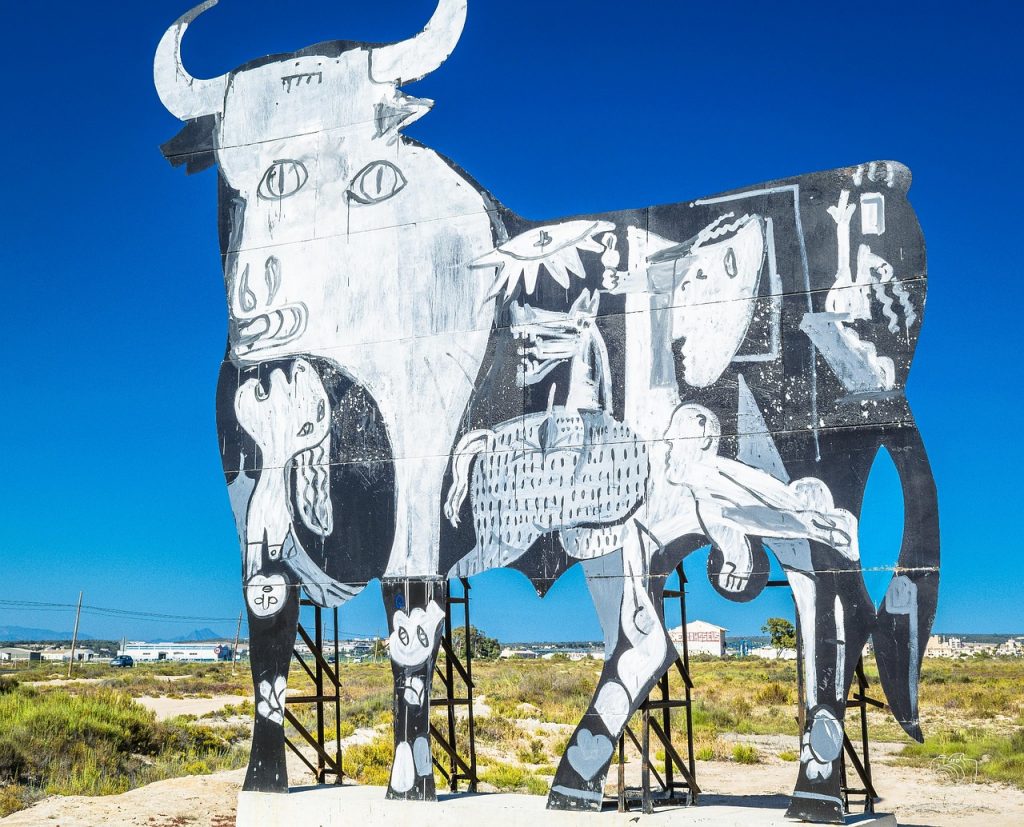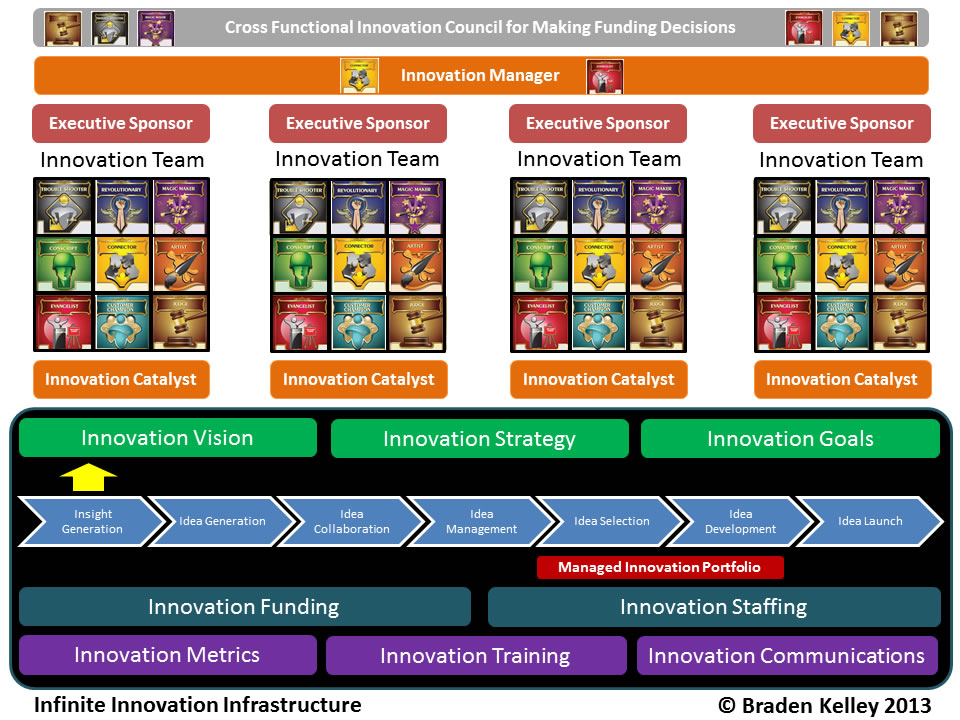Lessons from Picasso and David Attenborough

GUEST POST from Pete Foley
We probably all agree that the conservation of our natural world is important. Sharing the planet with other species is not only ethically and emotionally the right thing to do to, but it’s also enlightened self-interest. A healthy ecosystem helps equilibrate and stabilize our climate, while the potential of the largely untapped biochemical reservoir of the natural world has enormous potential for pharmaceuticals, medicine and hence long-term human survival.
Today I’m going to propose yet another reason why conservation is in our best interest. And not just the preservation of individual species, but also the maintenance of the complex, interactive ecosystems in which individual species exist.
Biomimicry: Nature is not only a resource for pharmaceuticals, but also an almost infinite resource for innovation that transcends virtually every field we can, or will imagine. This is not a new idea. Biomimicry, the concept of mimicking natures’ solutions to a broad range of problems, was first coined by Janine Benyus in 1997. But humans have intuitively looked to nature to help solve problems throughout history. Silk production in ancient bio-technology that co-opts the silk worm, while much of early human habitations were based on caves, a natural phenomenon. More recently, Velcro, wind turbines, and elements of bullet train design have all been attributed to innovation inspired by nature.
And Biomimicry, together with related areas such as biomechanics and bio-utilization taps into the fundamental core of what the front end of innovation is all about. Dig deep into virtually any innovation, and we’ll find it has been stolen from another source. For example, early computers reapplied punch cards from tapestry looms. The Beatles stole and blended liberally from the blues, skiffle, music hall, reggae and numerous other sources. ‘Uberization’ has created a multitude of new business from AirBNB to nanny, housecleaning or food prep services. Medical suturing was directly ‘stolen’ from embroidery, the Dyson vacuum from a sawmill, oral care calcium deposition technology was reapplied from laundry detergents, etc., etc..
Picasso – Great Artists Steal! This is also the creative process espoused by Pablo Picasso when he said ‘good artists borrow, great artists steal’. He ‘stole’ elements of African sculpture and blended them with ideas from contemporaries such as Cézanne to create analytical cubism. In so doing he combined existing knowledge in new ways that created a revolutionary and emergent form of art – one that asked the viewer to engage with a painting in a whole new way. Innovation incarnate!
Ecosystems as an Innovation Resource: The biological world is the biggest potential source of potential innovative ideas we have at our disposal anywhere. Hence it is an intuitive place to go looking for ideas to solve our biggest innovation challenges. But despite many people trying to leverage this potential goldmine, including myself, it’s never really achieved its full potential. For sure, there are a few great examples, such as Velcro, bullet train flow dynamics or sharkskin surfaces. But given how long we’ve been playing in this sandbox, there are far too few successes. And of those, far too many are based on hindsight, as opposed to using nature to solve a specific challenge. Just look at virtually any article on biomimicry, and the same few success stories show up year after year.
The Resource/Source Paradox. One issue that helps explain this is that the natural world is an almost infinite repository of information. That potential creates a challenging signal to noise’ search problem. The result is enormous potential, but coupled with almost inevitably high failure rates, as we struggle to find the most useful insights
Innovation is More than Ideation: Another challenge is that innovation is not just about ideas or invention; it’s about turning those ideas into practice. In the case of biomimicry, that is particularly hard, as the technical challenge of converting natural technology into viable commercial technologies is hampered because nature works on fundamentally different design principles, and uses very different materials to us. Evolution builds at a nano scale, is highly context dependent, and is result rather than theory led. Materials are usually organic; often water based, and are grown rather than manufactured. Very different to most conventional human engineering.
Tipping Point: But the good news is that materials science, technology, 3D printing and computational and data processing power, together with nascent AI are evolving at such a fast rate that I’m optimistic that we will soon reach a tipping point that will make search and translation of natural innovations considerably easier than today. Self-learning systems should be able to more easily replicate natural information processing, and 3D printing and nano structures should be able to better mimic the physical constructs of natural systems. AI, or at least massively increased computing power should make it easier for us to both ask the right questions and search large, complex databases.
Conservation as an Innovation Superpower: And that brings me back to conservation as an innovation superpower. If we don’t protect our natural environment, we’ll have a lot less to search, and a lot less to mimic. And that applies to ecosystems as well as individual species. Take the animal or plant out of its natural environment, and it becomes far more difficult to untangle how or why it has evolved in a certain way.
Evolution is the ultimate exploiter of serendipity. It does not have to understand why something works, it simply runs experiments until it stumbles on solutions that do, and natural selection picks the winner(s). That leads to some surprisingly sophisticated innovation. For example, we are only just starting to understand the quantum effects used in avian navigation and photosynthesis. Migratory birds don’t have deep knowledge of quantum mechanics; the beauty of evolution is that they don’t need to. The benefit to us is that we can potentially tap into sophisticated innovation at the leading edge of our theoretical knowledge, provided we know how to define problems, where to look and have sufficient knowledge to decipher it and reduce it to practice. The bad news is that we don’t know what we don’t know. Evolution tapped into quantum mechanics millennia before we knew what it was, so who knows what other innovations lie waiting to be discovered as our knowledge catches up with the nature – the ultimate experimenter.
Ecosystems Matter: But a species without the context of its ecosystem is at best half the story. Nature has solved flight, deep-water exploration, carbon sequestration, renewable energy, high and low temperature resilience and so many more challenges. And it has also done so with 100% utilization and recycling on a systems basis. But most of the underlying innovations solve very specific problems, and so require deep understanding of context.
The Zebra Conundrum: Take the zebra as an example. I was recently watching a David Attenborough documentary about zebras. As a tasty prey animal surrounded by highly efficient predators such as lions, leopards, cheetahs and hyenas, the zebra is an evolutionary puzzle. Why has it evolved a high contrast coat that grabs attention and makes it visible from miles away? High contrast is a fundamental visual cue that means even if a predator is not particularly hungry; it is pretty much compelled to take notice of the hapless zebra. But despite this, the zebra has done pretty well, and the planes of Africa are scattered with this very successful animal. The explanation for this has understandably been the topic of much conjecture and research, and to this day remains somewhat controversial. But more and more, the explanation is narrowing onto a surprisingly obvious culprit; the tsetse fly. When we think of the dangers to a large mammal, we automatically think of large predators. But while zebras undoubtedly prefer to avoid being eaten by lions, diseases associated with tsetse fly bites kill more of them. That means that avoiding tsetse flies likely creates stronger evolutionary pressure than avoiding lions, and that is proving to be a promising explanation for the zebras coat. Far less flies land on or bite animals with stripes. Exactly why that is remains debatable, and theories range from disrupting the flies vision when landing, to creating mini weather fronts due to differential heating or cooling from the stripes. But whatever the mechanism ultimately turns out to be, stripes stop flies. It appears that the obvious big predators were not the answer after all.
Context Matters: But without deep understanding of the context in which the zebra evolved, this would have been very difficult to unravel. Even if we’d conserved zebras in zoos, finding the tsetse fly connection without the context of the complex African savannah would be quite challenging. It’s all too easy to enthusiastically chase an obvious cause of a problem, and so miss the real one, and our confirmation bias routinely amplifies this.
We often talk about protecting species, but if, as our technology evolves to more effectively ‘steal’ ideas from natural systems, from an innovation perspective alone, preserving context, in the form of complex ecosystems may likely turn out to be at least as important as preserving individual species. We don’t know what we don’t know, and often the surprisingly obvious and critical answer to a puzzle can only be determined by exploring a puzzle in its natural environment.
Enlightened Self-Interest. Could we use an analogy to the zebra to help control malaria? Could we steal avian navigation for gps? I have no idea, but I believe this makes pursuing conservation enlightened self-interest of the highest order. We want to save the environment for all sorts of reasons, but one of the most interesting is that one-day, some part of it could save us.
Image credit: Pixabay
![]() Sign up here to get Human-Centered Change & Innovation Weekly delivered to your inbox every week.
Sign up here to get Human-Centered Change & Innovation Weekly delivered to your inbox every week.


 We have worked with Fortune 500 companies and other organizations over the past 26 years deploying Outcome-Driven Innovation (ODI), a proven
We have worked with Fortune 500 companies and other organizations over the past 26 years deploying Outcome-Driven Innovation (ODI), a proven  In setting up an innovation and insights group from scratch, first want to define how you define success. What does this group hope to achieve? What issues is it addressing? What are the barriers to success?
In setting up an innovation and insights group from scratch, first want to define how you define success. What does this group hope to achieve? What issues is it addressing? What are the barriers to success? Many corporate innovation leaders don’t have the luxury of starting an innovation and insights function “from scratch” as they’re often saddled with the inspiring (?) vision of a senior leader, a mandate to make use of resources who don’t fit in elsewhere, or the herculean task of filling a gap in a company’s growth plan which has few degrees of freedom to actually go and try something new. So on the rare occasions when this is the starting place, here are the top five things I consider strong precursors of success:
Many corporate innovation leaders don’t have the luxury of starting an innovation and insights function “from scratch” as they’re often saddled with the inspiring (?) vision of a senior leader, a mandate to make use of resources who don’t fit in elsewhere, or the herculean task of filling a gap in a company’s growth plan which has few degrees of freedom to actually go and try something new. So on the rare occasions when this is the starting place, here are the top five things I consider strong precursors of success: It doesn’t matter whether your organization is B2B, B2C, a charity, a government entity, or all four. Every innovation and insights organization must begin with their customers in mind, and make sure that they have the buy-in of key internal organizations (their customers in this context) to pick up their outputs and turn them into new or renewed product and/or service offerings. Unless the rest of the organization converts your ideas into new sources of value for the organization or utilizes them to increase existing sources of value, then eventually your group will become the victim of budget cuts.
It doesn’t matter whether your organization is B2B, B2C, a charity, a government entity, or all four. Every innovation and insights organization must begin with their customers in mind, and make sure that they have the buy-in of key internal organizations (their customers in this context) to pick up their outputs and turn them into new or renewed product and/or service offerings. Unless the rest of the organization converts your ideas into new sources of value for the organization or utilizes them to increase existing sources of value, then eventually your group will become the victim of budget cuts.
 The most critical thing the leader of a new insight and innovation group needs to consider in order to be successful is stakeholder expectations. Are stakeholders seeking insights and innovations that improve today’s business? Are they hoping to go build exciting new disruptive ventures? Or are they trying to create a more enabling culture of innovation? Those are distinctly different mandates, and a lack of clarity can lead a new leader to move in the wrong direction.
The most critical thing the leader of a new insight and innovation group needs to consider in order to be successful is stakeholder expectations. Are stakeholders seeking insights and innovations that improve today’s business? Are they hoping to go build exciting new disruptive ventures? Or are they trying to create a more enabling culture of innovation? Those are distinctly different mandates, and a lack of clarity can lead a new leader to move in the wrong direction.